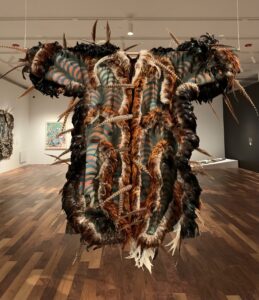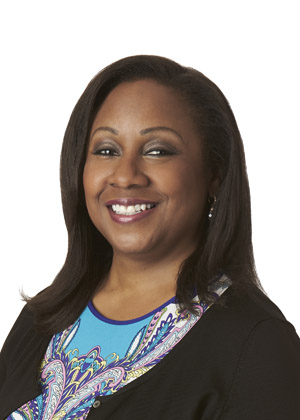Recently, I had the opportunity, the privilege really, of attending the 2019 Science and Technology in Society forum (STS forum) in Kyoto, Japan. The fundamental concept of the STS forum is a focus on the “lights and shadows of science and technology”—leveraging science and technology as positive tools for addressing societal needs, while also understanding and mitigating the potential negative impacts of science and technology.
The 2019 STS forum brought together over 1,400 global leaders in science and technology, education, policymaking, business, and media from nearly 80 countries, regions, and international organizations. This year’s meeting focused on “Energy and Environment” and all of the ways this affects our lives. Further, the meeting highlighted a number of other important topics: the “Information Driven Society,” including Artificial Intelligence (AI), the Internet of Things (IoT), and Big Data analytics; innovation and basic science; life sciences and healthcare; international cooperation in science and technology; and multi-sectoral collaboration, for example, between academia, government, and industry. Whew! It was amazing, and I was truly in my element.
One topic touched on repeatedly was the importance of increasing the number of women in science and technology. Indeed, it was mentioned by both Japan’s Prime Minister, Shinzo Abe, who opened the forum, and by STS forum Founder and Chairman Koji Omi. I was of course thrilled to hear this stated, as this is the primary goal of the Clare Boothe Luce Program. In fact, women were significantly underrepresented at the STS forum. STS forum did a good job of including at least one, usually very high-ranking, woman on each panel. However, as at many STEM-focused conferences, there were a number of “manels:” panels consisting entirely of men. STS forum does have a Young Leaders program that appears to be well-balanced in terms of gender, which I see as an indication that the forum is beginning to work to address the issue of gender in STEM. I personally believe that increased inclusion of women in STEM is an ethical imperative. As panelist Matilda Ernkrans, Swedish Minister for Education and Research, pointed out with respect to addressing current and future challenges, “We can’t succeed with half the population.”
A personal highlight of the meeting included comments made at the opening plenary session, “Science and Technology for the Future of Humankind,” (how’s that for a session title?!) by Dr. Rita Colwell, former Director of the U.S. National Science Foundation and Distinguished Professor at University of Maryland College Park. I have had the pleasure of knowing Dr. Colwell through her work with the National Academy of Sciences Committee on Women in Science Engineering and Medicine. Dr. Colwell asked participants, “How do we harness wisdom from the massive amounts of data that we have collected?” She indicated that it would likely fall on the next generation of scientists and leaders to address many of the challenges we face, and that we would need to use an interdisciplinary approach that includes behavioral and social sciences. The theme of using an interdisciplinary approach to identify solutions and develop technologies, was repeated throughout the conference. Again, I was thrilled to hear this!
As a behavioral scientist myself, in addition to being an engineer, I have often lamented that behavioral and social sciences are too often left out of technology development and innovation, in spite of the fact that most technology is developed for human use. Who better to collaborate with on your interdisciplinary innovation and technology development team than scientists who study and understand human behavior? I’m not talking about “user interface” after the technology has already been developed but collaborating with people who research the behavior of those for whom the technology is being developed. That said, with many, if not most, scientists trained in silos within a specific discipline, I understand that it’s not often clear how to collaborate with a behavioral or social scientist.
I am pleased to report that interdisciplinary research and innovation is becoming much more common, including among CBL Program grantees. On this, I believe that we can take a lesson from the field of Public Health, which routinely crosses disciplinary boundaries to address large-scale, real-world problems. As with increasing the number of women in STEM, I believe it is an ethical imperative to include behavioral and social scientists on interdisciplinary teams that are developing technology for human users. In this way, I believe we may be able to avoid some of the “shadows” or negative impacts of new technology.
Another important lesson that I took away from the STS forum was on the critical importance of direct communication with and outreach to the public. Participants noted that members of the public are not only customers and consumers of science and technology, but also taxpayers whose tax dollars fund government support of science and technology, and voters who elect the officials who ultimately make science policy. Indeed, they perceived that some of the public’s indifference to the importance of basic research and science in daily life is due in part to insufficient efforts by those of us in the field to communicate to the public. Again, this is a skill set that is seldom taught in higher education, but efforts are improving. (Check out the Alan Alda Center for Communicating Science at Stony Brook University—my alma matter!)
There was much discussion about efforts around the globe to address climate change. (Yay!) Several sessions and conversations highlighted that academia can be a platform for collaboration and that there needs to be an increasing focus not only on interdisciplinary work, but also active learning, ethical reasoning, and written communication. Other sessions highlighted the promises and challenges of Artificial Intelligence and emphasized that we must work to ensure that AI doesn’t reproduce existing human biases and have negative impacts on society. If you’ve been reading this blog, some of this will sound familiar! It is encouraging to know that these topics are being discussed around the globe.
Finally, in one breakout session that I attended, each participant was asked if they were pessimistic or hopeful for the future. I answered that I was hopeful. Seeing so many brilliant, enthusiastic young people in science and technology at this meeting, and hearing so much conversation by global leaders in science and technology on the topics that we have been highlighting in this blog, gives me much hope that we are on the right path. I have already marked the 2020 STS forum in my calendar. Perhaps I will see some of you in Kyoto next October!
Carlotta M. Arthur, Ph.D.
Director, Clare Boothe Luce Program, Henry Luce Foundation
Author Bio
Carlotta M. Arthur, Ph.D. directs the Clare Boothe Luce (CBL) Program at the Henry Luce Foundation. Since its inception in 1989, CBL has been one of the most significant sources of private support for women in science, mathematics and engineering in higher education in the U.S. Prior to joining Luce in 2012, Carlotta directed the Mellon Mays Undergraduate Fellowship and Diversity Initiatives Programs at the Andrew W. Mellon Foundation. The first African American woman to earn a B.S. in Metallurgical Engineering from Purdue University, she later completed a Ph.D. in Clinical Psychology (Psychophysiology) at SUNY Stony Brook. Carlotta was a member of the inaugural cohort of W.K. Kellogg Scholars in Health Disparities at the Harvard School of Public Health; an Assistant Professor at Meharry Medical College, an HBCU in Nashville, TN; and an Adjunct Assistant Professor at the Dartmouth Geisel School of Medicine. Dr. Arthur is a member of the Society of Women Engineers (SWE) Research Advisory Committee and sits on the American Psychological Association Leadership Institute for Women in Psychology Advisory Committee.
Sign up for updates
Explore Themes and Ideas

































































